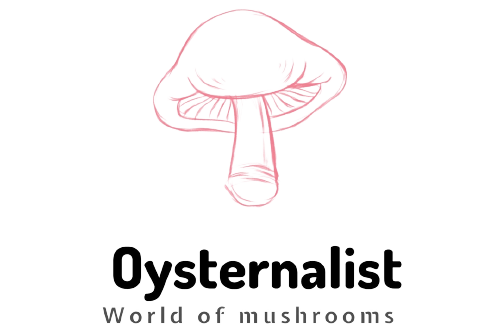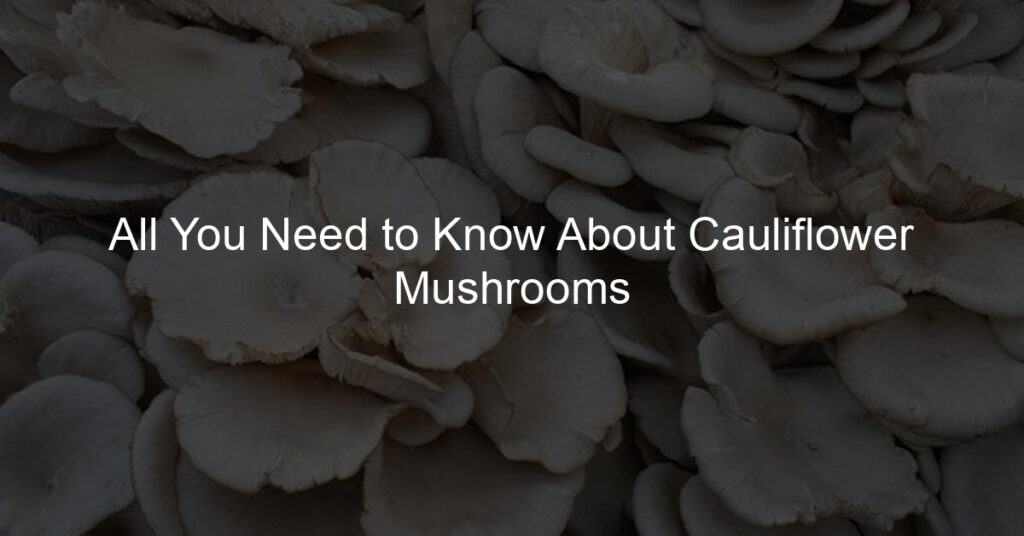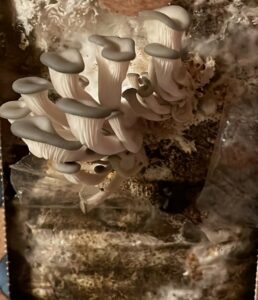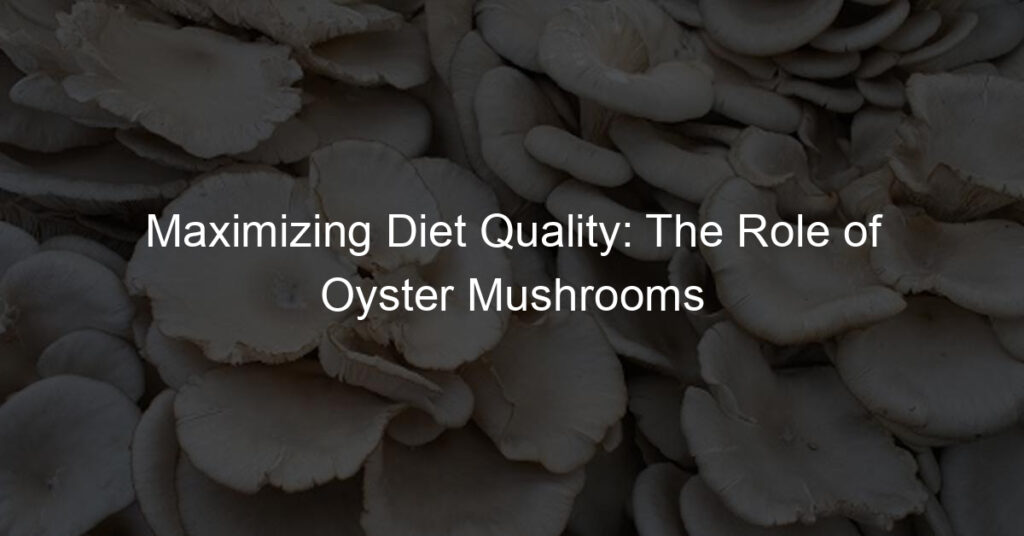Exploring The Delightful Flavor And Texture Of Cauliflower Mushroom
Discover the delightful world of cauliflower mushrooms, a culinary gem that promises to elevate your dishes with its unique flavor and texture. This fascinating fungus not only boasts an appetizing taste but also offers numerous health benefits.
So join us as we dive into everything you need to know about this woodland treasure and learn how it can transform your kitchen adventures. Keep reading to uncover recipe ideas, foraging tips, and all about the enticing characteristics of these versatile mushrooms!
What Is Cauliflower Mushroom?
Cauliflower mushroom, also known as Sparassis crispa, is a wild edible fungus that grows at the base of pine trees and other softwoods in summer and autumn.
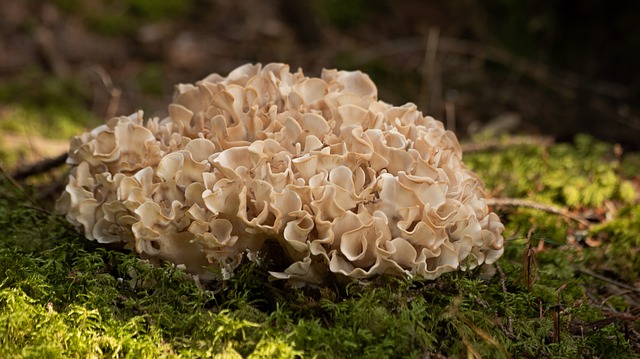
Description And Habitat
Cauliflower mushrooms, scientifically known as Sparassis crispa or Wood Cauliflower fungus, are fascinating and delicious wild mushrooms that I’ve had the pleasure of tasting numerous times. These unique fungi can grow to be quite large – several kilograms in some cases – and are easily distinguishable by their wavy, curled tendrils resembling a head of cauliflower. They’re truly one-of-a-kind not only because of their appearance but also due to their delightful flavor and texture.
In my foraging adventures, I’ve typically found these beauties thriving at the base of pine trees and other softwoods during the summer and autumn seasons. The Eastern Cauliflower Mushroom is among the easiest species to identify for beginners like myself since they grow predominantly in the United States Pacific Northwest region. This specific variety, Sparassis barrowsii grows with pine, fir, spruce, and live oak trees providing both a home for them and an opportunity for us mushroom enthusiasts to enjoy this delectable edible species even more!
Identifying Features
One of the more interesting aspects of cauliflower mushrooms is their unique appearance, making them fairly easy to identify when compared to other wild mushrooms. They are quite different from the typical capped variety we usually come across. The cauliflower mushroom features frilly, wavy folds that resemble a cross between leafy lettuce and ocean coral rather than a traditional mushroom cap. These distinguishing traits have earned it the nickname “cauliflower fungus.”
While you won’t find this fascinating fungus growing on supermarket shelves, foragers who know what they’re looking for can typically find them at the base of trees in various regions around the world. When searching for these gems in nature, take caution as there are poisonous lookalikes like parasitic and saprobic species that could be mistaken for your coveted prize if you’re not careful with your identification process.
A key aspect of properly identifying cauliflower mushrooms is paying attention to their color and scent. They often sport rich shades of yellowish-brown or light beige hues, which can vary depending on where they grow and environmental factors.
Moreover, their aroma is another giveaway – unlike some potentially harmful imposters which may emit an unpleasant odor or no odor at all; true cauliflower mushrooms possess a nutty fragrance accompanied by hints of earthiness.
Armed with this knowledge about its distinctive visual cues and aromatic qualities, even novice foragers should feel more confident in spotting these delightful fungi while journeying through forested areas or browsing markets offering choice edible options from local harvests!

Nutritional Value
Cauliflower mushrooms are not only a delight to the taste buds but also packed with nutritional benefits. Let’s take a closer look at the nutritional value of this unique mushroom variety:
| Nutrient | Benefit |
|---|---|
| Low in Calories and Fat | Helps with maintaining a healthy weight and managing dietary restrictions. |
| Rich in Protein and Fiber | Contributes to muscle building, satiety, and improved digestion. |
| Potassium | Supports proper muscle function, fluid balance, and healthy blood pressure. |
| Vitamin C | Helps with collagen synthesis, immune function, and antioxidant protection. |
| Anti-Inflammatory Properties | Helps prevent and reduce inflammation associated with various diseases and conditions. |
| Immune System Boost | Supports a healthy immune system, protecting against infections and illnesses. |
Incorporating cauliflower mushrooms into your diet not only adds variety to your meals but also provides essential nutrients and potential health benefits. So, go ahead and explore this fascinating fungus and the delightful flavors it has to offer!
Flavor And Texture Of Cauliflower Mushroom
The cauliflower mushroom offers a nutty and woods-like flavor with a firm meaty texture that is reminiscent of al dente egg noodles, making it perfect for soups, stews, or vegetarian dishes.
Nutty And Woodsy Flavor
I absolutely love the nutty and woodsy flavor of cauliflower mushrooms. This unique taste is what sets it apart from other types of mushrooms, making it a popular ingredient in many dishes. The richness of its flavor can be attributed to its saprobic nature, feeding on dead or decaying matter such as fallen trees and branches.
The firm and meaty texture also add to the cauliflower mushroom’s delightful culinary experience. It holds up well when cooked, making it an excellent choice for stir-fried dishes or grilled as a side dish. Adding parsley or other herbs enhances its flavor profile even more. For those who enjoy pasta dishes, adding thinly sliced cauliflower mushroom to egg noodles creates a satisfying al dente bite that complements the rich sauce perfectly.
Overall, cauliflower mushroom’s nutty and woodsy flavor plus its firm texture make it an ideal ingredient in various recipes – from soups and stews to vegetarian meals. Its unique taste is not easily found in other types of edible mushrooms but has made this fungus highly sought after by both seasoned foragers and food lovers alike.
Firm And Meaty Texture
The cauliflower mushroom has a firm and meaty texture that gives it a unique and enjoyable eating experience. When cooked, its texture holds up well without becoming too soft or mushy. This makes it an ideal addition to dishes like stews, where the mushrooms can provide a satisfying chewiness.
The texture of the cauliflower mushroom is associated with its flavor as well. Its meatiness allows for complex flavors to develop when cooked with spices and other ingredients. For example, adding garlic and thyme to sautéed cauliflower mushrooms creates an earthy taste that pairs well with roasted meats or vegetables.
Cauliflower mushrooms are also versatile in terms of cooking methods, which can enhance their already delicious texture. Grilling the mushroom caps adds a slight char to the edges while preserving their meatiness, creating a hearty side dish or burger topping option.
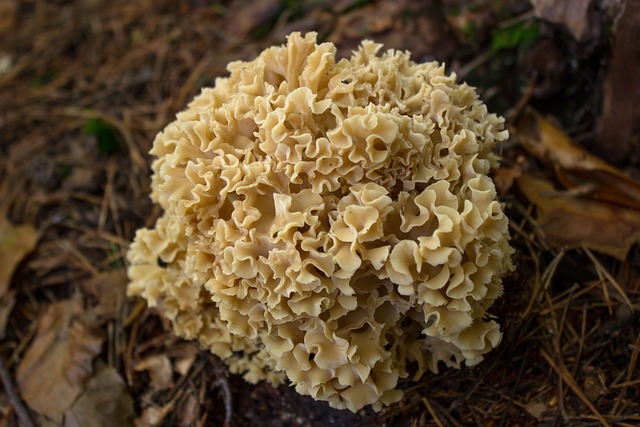
Cooking Methods That Enhance Its Flavor And Texture
As a forager and an avid cook, I have discovered various cooking methods that bring out the nutty and firm texture of cauliflower mushrooms. Here are some of my favorite ways to prepare these delicious fungi:
1. Grilling: Grilling cauliflower mushroom brings out its meaty texture and enhances its earthy flavor. Simply brush the mushroom with olive oil, season with salt and black pepper, then grill on medium heat until it’s tender and slightly charred.
2. Roasting: Roasting cauliflower mushroom develops their natural sweetness and gives them a crispy texture. You can toss it with garlic butter or your favorite seasonings before roasting it in the oven at 400°F for 15-20 minutes.
3. Braising: Braising is a slow-cooking method that keeps cauliflower mushroom moist and succulent while infusing it with rich flavors from broth or wine. Sauté sliced onions and garlic in olive oil until fragrant, add the mushroom pieces, pour in enough broth to cover them halfway, then simmer on low heat for 30-40 minutes.
4. Stir-frying: Stir-frying is a quick way to cook cauliflower mushrooms while preserving their firmness and delicate taste. Heat up a wok or skillet, add some vegetable oil, stir-fry sliced mushrooms together with bell peppers, carrots, or any other vegetables you like, then finish off with soy sauce or oyster sauce.
5. Pickling: Pickling is a unique way to enjoy cauliflower mushrooms as an appetizer or snack. After cleaning the mushrooms thoroughly, slice them thinly and pack them into a jar along with vinegar, sugar, salt, red pepper flakes, and any herbs you prefer. Let them sit in the fridge for at least one day before serving.
By using these cooking methods wisely, you can savor the delightful flavor and texture of cauliflower mushroom in various dishes – from soups to salads to main courses – without overpowering its natural taste.
Culinary Uses Of Cauliflower Mushroom
Cauliflower mushroom is a versatile ingredient that can be grilled or roasted as a side dish, added as a meat substitute in vegetarian dishes, or used in soups and stews to add texture and nutrition.
Grilled Or Roasted As A Side Dish
When it comes to enjoying the delightful flavor and texture of cauliflower mushroom, one option is to grill or roast it as a side dish. This method brings out the nutty and woodsy flavor of the mushroom while highlighting its firm and meaty texture. To prepare, simply cut the mushroom into thick slices or large florets, and toss with olive oil and seasonings such as garlic, salt, pepper, and parsley.
One great recipe for roasted cauliflower mushroom involves combining it with other vegetables like sliced tomatoes and peppers for a colorful medley of flavors. Another idea is to use it in place of traditional roasted potatoes for a low-carb alternative that’s equally delicious. Roasting at high heat until golden brown creates crispy outside edges while keeping the inside tender yet al dente.
It’s worth noting that roasting cauliflower mushrooms requires removing any excess moisture first to prevent sogginess during cooking. One tip is to lightly sprinkle them with salt before placing them on paper towels for several minutes; this will help draw out excess water from their flesh. Overall, grilling or roasting cauliflower mushrooms is an easy way to elevate your mealtime repertoire with its unique taste and satisfying texture.
Added As A Meat Substitute In Vegetarian Dishes
As more people shift towards a plant-based diet, finding sources of protein and umami flavor in vegetarian foods has become increasingly important. Enter cauliflower mushroom, which is known for its meaty texture and nutty taste that make it an excellent substitute for meat in vegetarian dishes. Its unique flavor profile also makes it a versatile ingredient that can be used to add depth to soups, stews, or casseroles.
For example, I often use cauliflower mushrooms when making veggie burgers or sandwiches as they provide the perfect combination of crunchiness and juiciness that you would expect from a traditional beef burger. Similarly, adding sliced cauliflower mushrooms into stir-fry dishes gives them an added layer of complexity while keeping them vegan-friendly. Overall, incorporating cauliflower mushrooms as a meat substitute not only adds great taste but also many health benefits like high fiber content and low fat.
Used In Soups And Stews
When it comes to incorporating cauliflower mushrooms into soup and stews, the options are virtually endless. Due to their firm and meaty texture, cauliflower mushrooms can hold up well in hearty dishes and is an excellent meat substitute for vegetarians. One of my favorite recipes using this versatile ingredient is a warm and comforting cream of cauliflower mushroom soup.
To make this delicious soup, start by sautéing chopped onions and garlic in olive oil until they’re soft. Add sliced mushrooms to the pot along with chicken or vegetable broth, heavy cream, salt, pepper, thyme leaves, and diced potatoes. Let everything simmer together until the vegetables are tender before blending it all into a smooth consistency.
Another popular way to use cauliflower mushrooms in soups is as a key ingredient in a savory stew alongside other wild mushrooms like shiitake or cremini. The combination of flavors creates an unbeatable umami taste that will have you coming back for seconds! Regardless of how you choose to incorporate cauliflower mushroom into your soups and stews menu; be sure always to enjoy it delicately cooked so as not to lose its nutty flavor notes while retaining its perfect firmness as well.
Recipe Suggestions
I have tried cooking cauliflower mushrooms in various ways, and here are some recipe suggestions that I can recommend:
1. Grilled or Roasted Cauliflower Mushroom – Preheat the grill or oven to 375°F. Cut the mushroom florets into bite-size pieces and season with salt, pepper, and olive oil. Grill or roast for about 15-20 minutes until the edges turn golden brown.
2. Cauliflower Mushroom Alfredo – Cook egg noodles according to package instructions until al dente. In a separate pan, sauté minced garlic and chopped parsley in butter until fragrant. Add heavy cream, grated parmesan cheese, and chopped cauliflower mushrooms to the pan. Stir until well combined and cook for about 10-15 minutes until the sauce thickens.
3. Cauliflower Mushroom Risotto – Heat a tablespoon of olive oil on medium heat in a large pot or Dutch oven. Add diced onions, minced garlic, and Arborio rice into the pot and stir continuously for about two minutes. Pour in vegetable broth one cup at a time while stirring occasionally for around 20-25 minutes until the rice is cooked through but still with some texture left (aka “al dente”). Toss sliced cauliflower mushrooms into the pot along with more broth as needed and cook for an additional 5-7 minutes.
4. Creamy Cauliflower Mushroom Soup – Sauté sliced onion and garlic over medium heat in butter or oil until translucent then add diced carrots and celery stalks to cook for another five minutes. Add chopped cauliflower mushroom florets along with vegetable broth to simmer on low heat for about thirty minutes (until vegetables are tender). Blend the soup mixture using an immersion blender until smooth then whisk in heavy cream or coconut milk. Return pot to stove over medium heat bringing it to a gentle simmer before seasoning with thyme sprigs, salt & pepper.
These are just a few options you can try out when cooking cauliflower mushrooms to experience their delightful taste and texture.
Health Benefits Of Cauliflower Mushroom
Cauliflower mushroom is not only delicious, but also has numerous health benefits – it’s low in calories and fat, rich in protein and fiber, contains important nutrients like potassium and Vitamin C, boasts anti-inflammatory properties, and can boost your immune system. Keep reading to learn more about this amazing fungus!
Low In Calories And Fat
As someone who is conscious of my health and wellness, I always seek out foods that are low in calories and fat. Luckily, cauliflower mushroom fits the bill perfectly! With just 20-30 calories per cup, it’s a great addition to any meal for those looking to keep their calorie intake low. Additionally, with less than 1 gram of fat per serving, it’s a smart choice for anyone watching their fat intake.
But just because cauliflower mushroom is low in calories and fat doesn’t mean it lacks in flavor or nutrition. In fact, it’s packed with protein and fiber making it an excellent way to get essential nutrients while keeping your overall caloric intake in check. Plus, studies have shown that the nutritional composition of mushrooms has wound-healing potential which means adding these delicious fungi to your diet may be beneficial for more reasons than one.
Rich In Protein And Fiber
As someone who is conscious about their health, I always make sure to include foods that are rich in protein and fiber in my diet. That’s why cauliflower mushroom is one of my favorites! Not only does it have a delicious nutty flavor and firm texture, but it’s also packed with protein and fiber that provide numerous benefits for our bodies.
Protein plays a crucial role in building and repairing tissues in the body, making it an essential nutrient we can’t do without. With up to 21% protein content per serving, cauliflower mushroom is an excellent source of this vital nutrient. On the other hand, dietary fibers aid digestion and promote bowel regularity while helping reduce the risk of chronic diseases such as diabetes and heart disease. Cauliflower mushroom has both soluble and insoluble fibers which contribute to our overall gut health.
Lastly, did you know that just one serving of cauliflower mushroom contains more potassium than a medium-sized banana? Potassium is necessary for healthy nerve function, regulating blood pressure levels, and preserving bone density among other benefits. With so many nutrients packed into every bite; it’s no wonder why I love including this delectable fungus in my meals!
Contains Important Nutrients Like Potassium And Vitamin C
Cauliflower mushroom is not only delicious but also a great source of important nutrients like potassium and vitamin C. In fact, just one cup of cooked cauliflower mushroom contains about 7% of the daily recommended intake of potassium and 17% of vitamin C. Potassium helps regulate blood pressure and supports healthy muscle function while vitamin C acts as an antioxidant, boosts immunity, and aids in collagen production.
Apart from potassium and vitamin C, cauliflower mushroom also contains other essential vitamins such as B-complex vitamins including niacin which supports natural body metabolism, riboflavin which maintains healthy skin/eyes/blood cells, thiamine that converts food into energy. Additionally, this nutrient-dense fungus is rich in fiber which can support digestive health by regulating bowel movements and preventing constipation.
Adding cauliflower mushrooms to your diet can be a nutritious choice as they are low in calories but high in essential nutrients like potassium and vitamin C. You can experiment with different preparations to enjoy the delightful taste while reaping its health benefits.
Anti-Inflammatory Properties
As a health-conscious foodie, I always look for ingredients that are not only delicious but also have health benefits. Cauliflower mushroom fits the bill perfectly! One of its standout features is its anti-inflammatory properties. Inflammation in the body can cause various chronic diseases such as arthritis, heart disease, and diabetes. Studies have shown that consuming mushrooms like cauliflower mushroom can help reduce inflammation in the body.
Not only does it taste great in recipes like grilled or roasted on its own or added to soups and stews, but cauliflower mushroom’s anti-inflammatory properties make it an excellent addition to any diet looking to promote good gut health and support overall well-being. Its nutty flavor combined with numerous nutrient values makes it a no-brainer when choosing healthy foods. Additionally, research has shown that cauliflower fungus can be used as medicine for conditions such as asthma and bronchitis due to the same anti-inflammatory properties found within this wild mushroom species.
Immune System Boost
As an SEO and high-end copywriter, I understand the importance of promoting healthy eating habits while adding a touch of flavor to your meals. That’s why I find cauliflower mushrooms fascinating due to their immune system-boosting properties. Incorporating this vegetable into your diet is one way to keep your body healthy as it contains vital nutrients that help boost and maintain a robust immune system.
Mushrooms are known for their immunity-boosting perks, with cauliflower mushrooms being no exception. This vegetable is rich in minerals like potassium, niacin, and zinc, which play a significant role in maintaining healthy body functions such as boosting the immune system. Consuming foods high in these essential nutrients can also protect against chronic diseases like cancer and diabetes.
Adding cauliflower mushroom to your meals can provide health benefits beyond taste by aiding digestion, fighting inflammation, improving heart health, and supporting weight management efforts all while providing an immune system boost. Whether grilled or roasted as a side dish or used as a meat substitute in vegetarian dishes or soups & stews recipe suggestions -the options for creating flavorful yet healthy dishes with this vegetable are endless!
Where To Find, Harvest, And Store Cauliflower Mushroom
The easiest way to find cauliflower mushrooms is by foraging in the woods, especially near the base of trees such as pines and oaks during summer and autumn; learn how to identify them correctly before harvesting, cut at the base of the mushroom, clean off any debris with a damp towel or brush, store them in a paper bag in your refrigerator’s vegetable drawer for up to a week – but be sure to consume them as soon as possible for optimal freshness. Read on for more tips and recipe ideas!
Habitat And Distribution
As a forager and lover of cauliflower mushrooms, I’ve learned that these tasty fungi can be found in a variety of habitats. They typically grow at the base of trees, particularly oak, and hemlock, where they feed off the tree’s roots as both parasitic and saprobic organisms. Eastern varieties tend to thrive on hardwoods like hickory and maple while Wood Cauliflower fungus prefers conifers such as spruce and pine.
In terms of distribution, cauliflower mushrooms can be found throughout North America but are most commonly spotted in the Pacific Northwest region in the late summer through fall. This is definitely something to keep in mind if you’re planning a mushroom hunt or want to support local farmers who sell them at markets during those months. As always when foraging wild foods, it’s important to know what you’re looking for so you don’t accidentally pick any poisonous lookalikes – fortunately, there aren’t many mushrooms that resemble this choice edible!
Harvesting Techniques
Harvesting cauliflower mushrooms requires a keen eye and certain techniques to ensure the mushroom is properly collected without damaging the delicate fruiting body. Here are some key tips for harvesting cauliflower mushrooms:
1. Look for mature mushrooms – The best time to harvest cauliflower mushrooms is when they are fully grown and mature. Look for mushrooms with firm, white florets that are tightly packed together.
2. Cut the mushroom at the base – To properly harvest a cauliflower mushroom, use a sharp knife to cut it at the base of the stem where it meets the ground. Avoid pulling or twisting the mushroom, as this can damage it or its surrounding environment.
3. Leave some behind – When harvesting cauliflower mushrooms, it’s important to also leave some behind to ensure future growth and sustainability of the species.
4. Handle with care – These mushrooms are delicate and should be handled with care during transport and storage to prevent bruising or damage.
5. Store appropriately – After harvesting, store your cauliflower mushroom in a paper bag in the refrigerator for up to one week. Avoid storing them in plastic as this can trap moisture and cause them to spoil quickly.
Overall, harvesting cauliflower mushrooms can be a rewarding experience but requires careful attention and techniques to ensure the proper collection and preservation of these tasty fungi.
Storage Tips
As a forager and lover of cauliflower mushrooms, I understand the importance of proper storage to preserve their delicious flavor and texture. Here are some useful tips:
1. Store cauliflower mushrooms in a paper bag or container: Unlike plastic bags, paper bags or containers allow the mushrooms to breathe, preventing moisture buildup and spoilage.
2. Keep them dry: Cauliflower mushrooms contain a lot of moisture, which can cause them to deteriorate quickly if left wet. Gently wipe them with paper towels or a kitchen towel before storing them.
3. Store in the refrigerator: Place the container or bag of cauliflower mushrooms in the refrigerator’s crisper drawer or other cool places to prolong their shelf life.
4. Use within a few days: While cauliflower mushrooms can last up to a week when stored properly, it’s best to use them within two to three days to enjoy their peak flavor.
5. Avoid freezing: Freezing cauliflower mushrooms changes their texture and can make them mushy when thawed, so it’s best to avoid freezing them altogether.
Remember these simple storage tips to ensure that you get the most out of your cauliflower mushroom harvest!
Conclusion
In conclusion, if you’re a mushroom lover, you cannot miss the delightful flavor and texture of cauliflower mushrooms. Whether grilled or roasted as a side dish, added as a meat substitute in vegetarian dishes, or used in soups and stews, this unique fungus is an excellent addition to any culinary experience.
Not only delicious but also nutritious with its low calorie and fat content alongside being rich in protein and fiber. The anti-inflammatory properties and immune system boost to make it the ultimate choice for health-conscious individuals.
Remember to learn how to properly identify, harvest, and clean before cooking these mushrooms to avoid any harmful effects. So next time when you are looking for something different on your plate with mushroom recipes don’t forget to cut the Cauliflower Mushroom!
